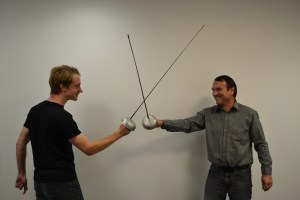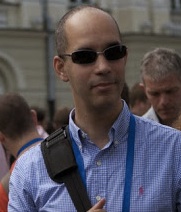
Interstellar‘s accretion disc, with and without Doppler shift. Figure 15 a, c from “Gravitational lensing by spinning black holes in astrophysics, and in the movie Interstellar” Oliver James et al 2015 Class. Quantum Grav. 32 065001
New insights into the effects of black holes from the team responsible for the Oscar®-winning visual effects of Interstellar.
Depicting a super-massive black hole in the movie Interstellar presented a new challenge to our visual effects team at Double Negative. Luckily the Executive Producer was theoretical physicist Kip Thorne who ended up working closely with us to create a new computer code, DNGR: Double Negative Gravitational Renderer. This code traces the path of light past a spinning black hole (Kerr metric) whose immense gravity warps space and time in its vicinity. A hot disk of gas orbiting the hole appears to Continue reading










You must be logged in to post a comment.